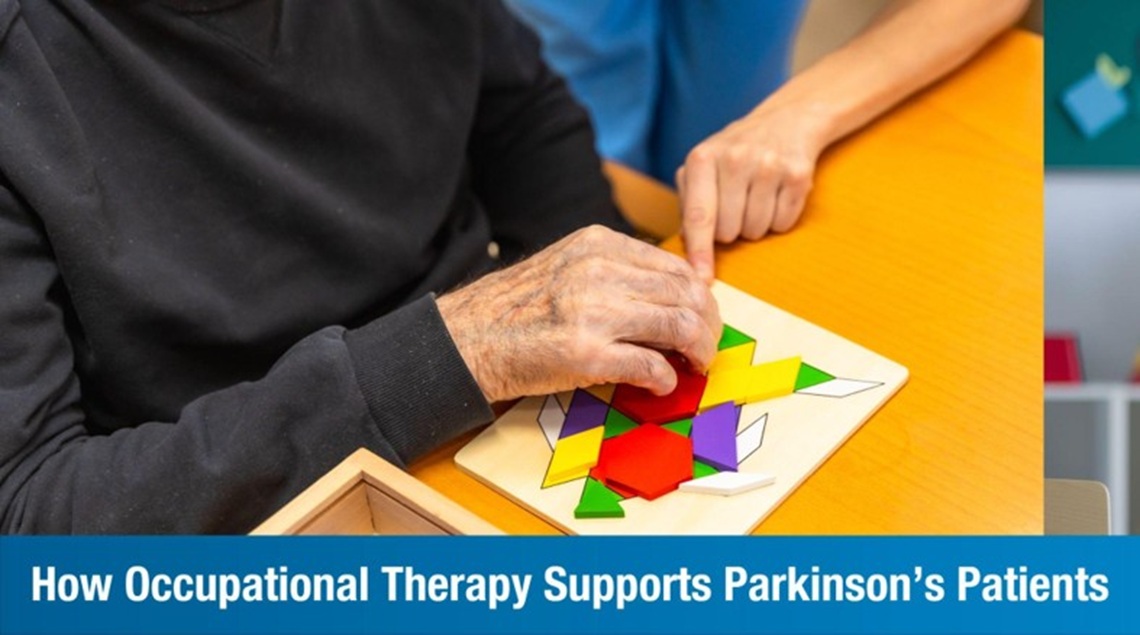
Living with Parkinson’s disease means navigating challenges that affect both movement and daily functioning. Over time, tasks that were once routine—like getting dressed, cooking, or writing—can become more difficult. This is where occupational therapy steps in, offering tailored strategies to help individuals regain control and lead more independent lives. Let’s explore how occupational therapy for Parkinson’s disease works, its benefits, and how Plexus creates personalized plans to support each patient’s unique journey.
Understanding Parkinson’s Disease and Its Daily Challenges
Parkinson’s disease is a progressive neurological condition that affects the brain’s ability to control movement. It typically develops gradually and is caused by the loss of dopamine-producing neurons in the brain.
Common Motor and Non-motor symptoms
People with Parkinson’s often experience tremors, muscle stiffness, slowness of movement (bradykinesia), and balance issues. Non-motor symptoms include depression, sleep disturbances, fatigue, and memory problems.
Impact On Daily Tasks and Independence
As the condition progresses, even simple activities such as buttoning a shirt, writing, or using utensils can become difficult. These limitations can lead to frustration, reduced confidence, and dependence on caregivers.
What is Occupational Therapy?
Occupational therapy is a type of rehabilitation focused on enabling people to participate in meaningful daily activities. An occupational therapist assesses physical, emotional, and cognitive challenges to help patients develop new strategies or modify tasks for greater independence.
Difference Between Occupational Therapy and Physical Therapy
While physical therapy focuses on strength, mobility, and physical recovery, occupational therapy targets the skills needed for everyday life, like grooming, dressing, cooking, and handling work-related tasks.
Key Goals for Parkinson’s Patients
For those with Parkinson’s, the primary goals of occupational therapy are to improve coordination, enhance cognitive function, increase independence, and maintain quality of life.
Benefits of Occupational Therapy for Parkinson’s Disease
Improving Fine Motor Skills and Coordination
OT sessions often focus on hand exercises and tools that enhance dexterity, making it easier to perform writing, grooming, or eating tasks.
Enhancing Cognitive Function and Memory
Occupational therapy also addresses cognitive challenges with memory aids, routine planning, and mental exercises.
Promoting Independence in Everyday Activities
Therapists introduce adaptive tools and techniques that make everyday tasks more manageable, helping patients retain a sense of control over their lives.
Managing Fatigue, Posture, and Mobility
Energy-conservation techniques, posture training, and customized routines can significantly reduce strain and discomfort during daily activities.
Customized OT Interventions at Plexus
At Plexus, each occupational therapy plan is uniquely tailored. Therapists assess the patient’s lifestyle, disease stage, and personal goals to develop a targeted rehabilitation program. This may include home modifications, assistive technology, hand function exercises, and caregiver training.
When to Consider Occupational Therapy for Parkinson’s
Early Signs that Indicate OT Support Is Needed
If you or your loved one is beginning to struggle with basic tasks, such as dressing, bathing, writing, or using the phone, it’s a good time to consult an occupational therapist.
How OT Fits into Long-term Parkinson’s Care
Incorporating occupational therapy early can slow functional decline, reduce the risk of falls, and support emotional well-being through all stages of the condition.
How Plexus Delivers Specialized OT for Parkinson’s
Plexus Neuro Centre combines cutting-edge neurorehabilitation tools with compassionate care. Our expert occupational therapists work hand-in-hand with neurologists, physiotherapists, and psychologists to provide an integrated treatment experience. Whether it’s helping you adapt to new routines or working on skill enhancement, we’re here every step of the way.
Need help getting started? Contact us today for a personalized consultation on occupational therapy for Parkinson’s disease.
📞 WhatsApp: +91 89048 42087
📍 Hyderabad: +91 78159 64668 | 📍 Bangalore: +91 93555 33404
FAQs
What are the benefits of occupational therapy for Parkinson’s disease?
Occupational therapy helps improve daily functioning by enhancing fine motor skills, cognitive abilities, and independence. It also supports posture, mobility, and energy conservation.
When should Parkinson’s patients start occupational therapy?
Ideally, early in the diagnosis. Starting occupational therapy early helps delay functional decline and improves long-term quality of life.
What does an occupational therapist do for Parkinson’s patients?
They assess the patient’s challenges and create personalized strategies to make everyday tasks easier, often using adaptive tools and routines.
Is occupational therapy different from physical therapy for Parkinson’s?
Yes. Physical therapy focuses on strength and movement, while occupational therapy targets everyday task performance, independence, and cognitive support.
How can Plexus help with occupational therapy for Parkinson’s?
Plexus offers personalized OT plans, expert therapists, and holistic neuro care—ensuring every patient gets the support they need to manage life with Parkinson’s disease effectively.










